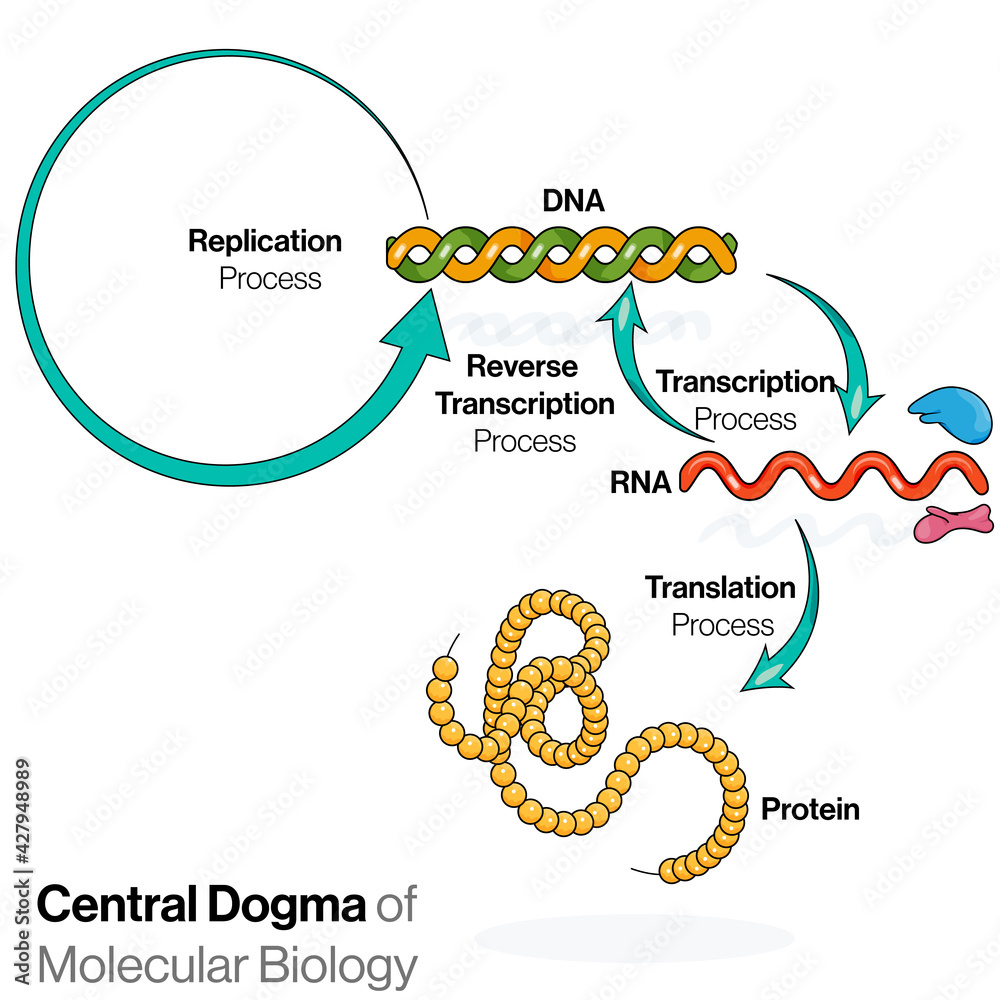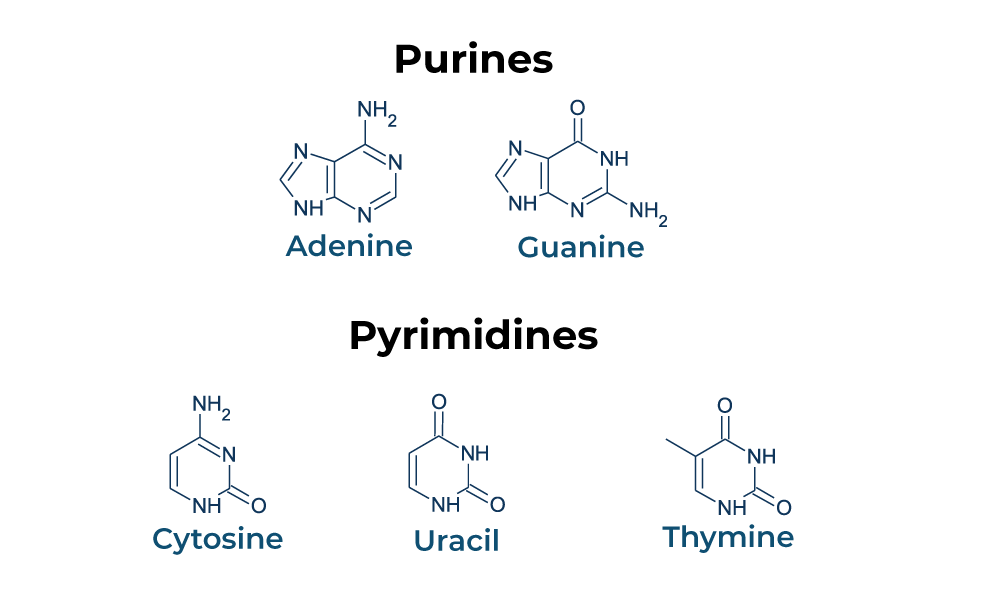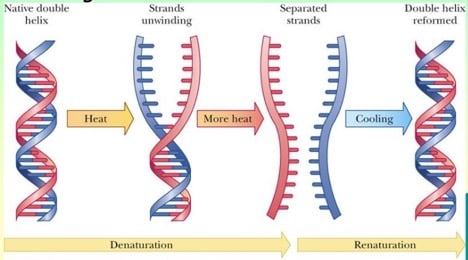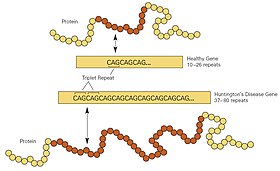DNA and RNA Structure and Stabilization
DNA and RNA Structure and Stabilization
Objectives
- Define the chemical components of deoxyribonucleic acid (DNA)
- Describe the forces that stabilize duplex nucleic acids
- Illustrate DNA structures beyond the double helix
- Describe the chemical components of ribonucleic acid (RNA)
- Define the various cellular types of RNA
- Show catalytic activities of RNA

The Central Dogma of Molecular Biology
The central dogma of molecular biology describes the flow of genetic information within a biological system. It is often summarized as "DNA makes RNA makes protein." This paradigm highlights the roles of DNA in storing genetic information, RNA as the intermediary, and proteins as functional molecules resulting from gene expression. However, some exceptions to this pathway exist, particularly in viral systems.

DNA and RNA Components: Nucleobases

Purines and Pyrimidines
Nucleobases are classified into two categories: purines and pyrimidines. These bases are crucial for the formation of nucleic acids, DNA, and RNA, and participate in base-pairing interactions.
- Purines: Adenine (A), Guanine (G)
- Pyrimidines: Cytosine (C), Thymine (T, in DNA), Uracil (U, in RNA)
Deoxyribonucleoside and Ribonucleoside Structures
In DNA, nucleobases are attached to a deoxyribose sugar, while in RNA, they are attached to a ribose sugar.
Deoxyribonucleosides: Deoxyadenosine (dA), Deoxyguanosine (dG), Deoxycytidine (dC), Deoxythymidine (dT)
Ribonucleosides: Adenosine (A), Guanosine (G), Cytidine (C), Uridine (U)

Nucleotide Structures
When phosphates are added to nucleosides, they become nucleotides:
- Deoxycytidine 5'-monophosphate (dCMP)
- Guanosine 5'-triphosphate (GTP)
- Adenosine 3',5'-cyclic monophosphate (cAMP)
Nomenclature of DNA and RNA
DNA strands are typically written in the 5' to 3' direction: - DNA: d(ACGT) - RNA: pACGU
Phosphodiester Linkages
Phosphodiester bonds link nucleotides in nucleic acids, forming the backbone of the DNA and RNA strands. These bonds are stable in DNA but susceptible to base-catalyzed cleavage in RNA due to the presence of the 2'-OH group.

Watson-Crick Base Pairs
Hydrogen bonding between specific pairs of nucleobases (adenine-thymine/uracil and guanine-cytosine) ensures the proper pairing and structural integrity of DNA and RNA.
Anti-parallel Strands
DNA consists of two strands running in opposite directions (anti-parallel) with complementary base pairing: A-T and G-C.
Stabilizing Factors in Duplex DNA
- Stacking Interactions: Due to π-bond overlap between bases.
- Hydrophobic Effect: Bases are hydrophobic and positioned inside the helix, excluding water.
- Hydrogen Bonding: Provides specificity and stability.
Different DNA Conformations
There are three main conformations of DNA: A-DNA, B-DNA, and Z-DNA. A-DNA and B-DNA are right-handed helices, while Z-DNA is a left-handed helix.

DNA Denaturation and Renaturation
DNA denaturation involves the separation of two strands due to heat, pH changes, or ionic strength. Renaturation (annealing) occurs when conditions return to normal, allowing complementary strands to rehybridize.

Tm and Melting Curves
The melting temperature (Tm) is the point at which half of the DNA duplexes dissociate into single strands, measurable via UV absorbance.

DNA Sequence Repeats and Structural Consequences
[h3]Symmetry Elements[/h3]Three types of symmetry elements are presente in DNA sequences: inverted repeats, mirror repeats, and direct repeats. These sequences can lead to structural formations like cruciforms and slipped mispaired DNA
[h3]Frameshift Mutagenesis and Nucleotide Expansion[/h3]DNA polymerase slippage during replication can lead to frameshift mutations and nucleotide expansions, implicated in diseases like Fragile X syndrome.
RNA Chemical Structure and Tertiary Structures
[p]RNA consists of a phosphate-ribose-backbone extending purine and pyrimidine bases away from the axis, capable of forming double-helical regions.tRNA StructureTransfer RNA (tRNA) molecules fold into a cloverleaf structure in two dimensions and a compact L-shape in three dimensions.
Ribosomal RNA (rRNA)Ribosomal RNA forms a part of the ribosome complex and is involved in protein synthesis. Some antibiotics target bacterial rRNA to inhibit protein synthesis.
RNA Catalytic ActivitiesSome RNA molecules, known as ribozymes, have catalytic activities essential for biological reactions.
DNA and RNA Superstructures
G-QuadruplexesG-rich sequences can form G-quadruplex structures, involved in regulatory processes.
Triple HelicesTriple-stranded DNA structures (triplexes) can form through Hoogsteen base-pairing, influencing gene regulation.

Epigenetic Modifications
DNA can undergo modifications such as methylation, leading to epigenetic changes that affect gene activity without altering the DNA sequence.